4th Island Meeting Held on Toshima
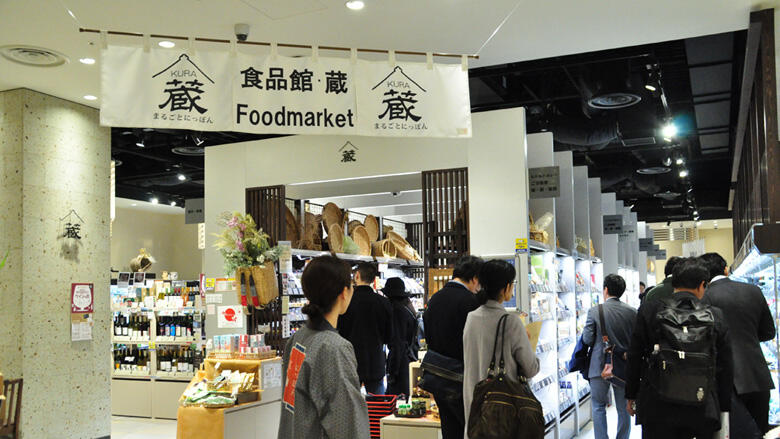
The Tokyo Treasure Islands Project is a project which aims to refine the Tokyo's islands brands through "Shima-Kaigi" (Island Meetings) with residents. This report covers the fourth Toshima island meeting and study tour held on November 26.
>> Click here for more information on Toshima
Using Toshima's ingredients and camellia oil in search for ways to increase publicity
In the last island meeting, participants from Toshima came up with dining establishments that offer interactions and a variety of Toshima-made products that can be enjoyed, antenna shops that offer a small and limited selection of products, and camellia oil as action plans. The participants then came up with antenna shops that focus on promoting a single product, establishments whose sales method and new product development can be used as a reference, and dining establishments that communicate local ingredients in the region as candidate destinations for the study tour.
For the study tour in the fourth island meeting, the participants will tour Marugoto Nippon, Melon and Roman, and Aogashima-ya to find hints on creating a detailed action plan.
Marugoto Nippon: Telling the story of the product with little cost and space
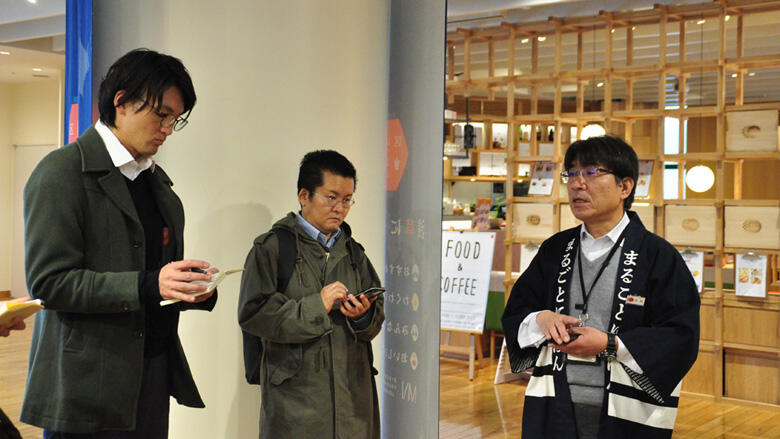
Marugoto Nippon is a commercial facility that sells local products from all over Japan. Due to the redevelopment of the Asakusa Park Six Wards entertainment district in Taito City's Asakusa, each of the four floors offer something different. Focusing on products that are yet to be known in Tokyo, it supports products made by individual and family-owned businesses by expanding their sales in the city.
One of the characteristic areas in the facility is the regional experience big plaza called Asakusa Nippon-ku located on the third floor, which includes the Recommended Furusato. 13 municipal governments rent booths on a one-year contract and display products and regional information. Here, the participants talked to the director of the facility and the representatives on each floor. They found out that the pros of holding a booth include not having to station a resident associate and being able to receive reports on the sales of products as well as PR effects, and the fact that it could be used as a test marketing place and to further product development.
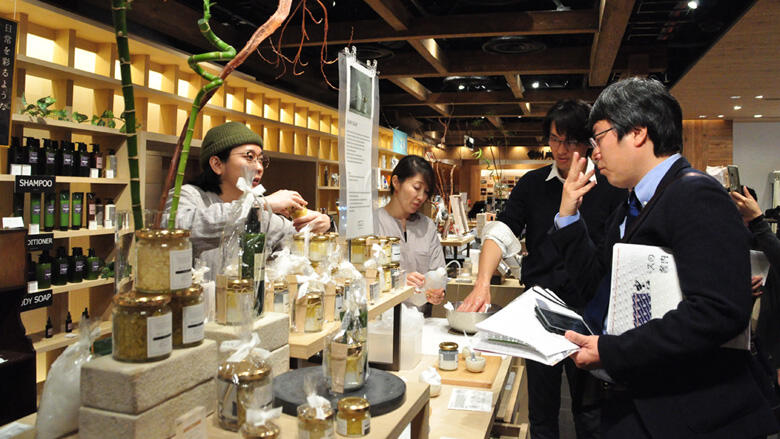
The Living Tool City that showcases regional goods located on the second floor expands the imagination of camellia oil sales by allowing the sampling of skin care products. The participants received an explanation by a floor representative who handles organic products and were told the importance and appeal of having a story.
Melon and Roman: Attracting people even with low recognition through specialized initiatives
The participants who are challenged by the fact that Toshima is not widely recognized and has limited products visited Melon and Roman, an antenna shop operated by Tsugaru City in Aomori Prefecture.
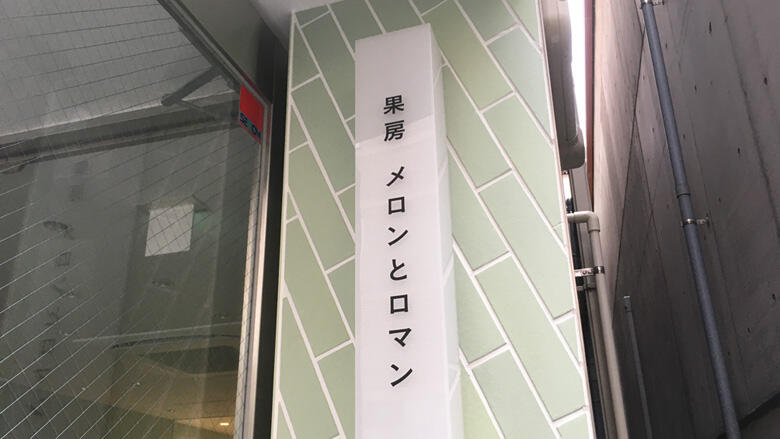
The building itself is located in the Kagurazaka area, which was found to be where women above 30 who like melons frequent. The first floor is for take-out orders, the second floor has a café, and the third floor is Tsugaru City's Tokyo office. Koji Nishimaki from Tsugaru City's Tokyo office says that the price of rent also matches their budget.
Mr. Nishimaki explained the aim of specializing in melons, given that the city leads in melon production, and how he would like it to lead to the city's revitalization and ultimately migration and work in agriculture. The participants asked questions on the number of visitors, the cooperation framework with the prefectural government, and even detailed questions regarding funding and circumstances.
The bustling dining establishment with an island theme and the challenges of operating it
The last place that was visited was a Japanese pub operated by an owner who was raised in Aogashima. The purpose of the visit is to obtain hints on the action plan of creating a place that connects Toshima with people, since the popular pub is island themed and occupies the second floor in a building near the west exit of Shinjuku station.
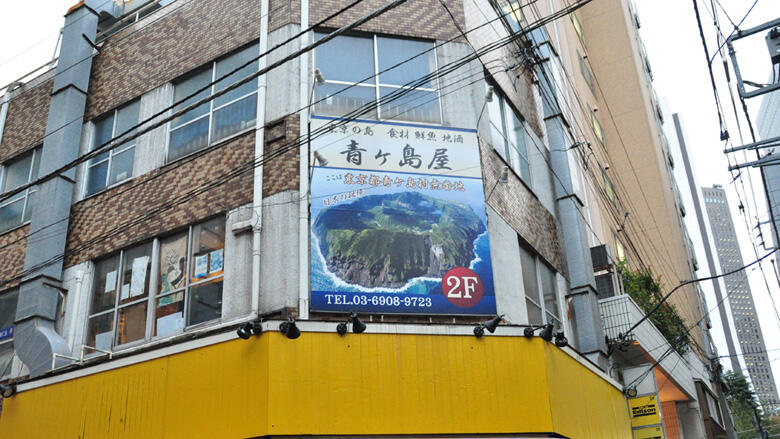
The participants learned from the owner the difficulties of menu development and securing ingredients and human resources, which are challenges when operating a dining establishment.
Aogashima-ya, which uses many ingredients from the Izu Islands, attempted to make a carpaccio using camellia oil but discovered it was too costly. The participants also felt keenly the challenges when Japanese spiny lobsters and horned turbans have poor catches.
In the reflection that was done at the end of the study tour, participants said that Marugoto Nippon was easy to use as a reference, realizing a dining establishment was difficult, and that there are too few items to open an antenna shop. They also said that in order to develop products and promote them, the purpose must be made clear.
With that and keeping in mind the requirement of having a clear purpose, it was decided that for the next island meeting, the desires of everyone will be extracted and the contents will be organized. People said, "This business is the first step" and "Let's turn the 0 into a 1." It was confirmed that the participants were on the starting line of polishing the appeal of the island.
The discussion will proceed in the fifth island meeting that will be held on January 15.


